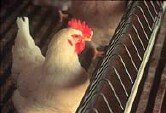
THURSDAY, April 5 (HealthDay News) — There’s evidence that a class of antibiotics banned for use in poultry in 2005 is still being used in U.S. poultry production, a new study says.
These antibiotics — called fluoroquinolones — are used to treat serious bacterial infections in people, particularly infections that are resistant to older classes of antibiotics.
A primary reason for the 2005 U.S. Food and Drug Administration ban on the use of fluoroquinolones in poultry was the increasing rate of fluoroquinolone resistance in Campylobacter bacteria.
In this study, researchers analyzed feather meal, a poultry production byproduct that is made from poultry feathers and is a common additive to chicken, swine, cattle and fish feed.
The researchers said they were surprised to find fluoroquinolones in eight of 12 samples of feather meal from different states. The presence of fluoroquinolones in the feather meal suggests that the poultry received the antibiotics before they were slaughtered, the Johns Hopkins Bloomberg School of Public Health and Arizona State University researchers explained.
The study was recently published in the journal Environmental Science & Technology.
Fluoroquinolones are a class of antibiotics that includes ciprofloxacin (Cipro, Proquin), enoxacin (Penetrex) and levofloxacin (Levaquin), among others.
“The discovery of certain antibiotics in feather meal strongly suggests the continued use of these drugs, despite the ban put in place in 2005 by the FDA,” lead author David Love said in a Hopkins news release.
“The public health community has long been frustrated with the unwillingness of FDA to effectively address what antibiotics are fed to food animals,” he added.
Study co-author Keeve Nachman, director of the Farming for the Future Program at the Johns Hopkins Center for a Livable Future, said the rate of fluoroquinolone resistance should have dropped since the ban.
“With such a ban, you would expect a decline in resistance to these drugs,” Nachman noted. “The continued use of fluoroquinolones and unintended antibiotic contamination of poultry feed may help explain why high rates of fluoroquinolone-resistant Campylobacter continue to be found on commercial poultry meat products over half a decade after the ban.”
A group representing the chicken industry disagreed with the report.
In a statement released Thursday, the National Chicken Council said, “Antibiotics are used sparingly in chicken production; and only those that are approved for use by the FDA. A majority of the antibiotics used to treat and prevent disease in chickens are not used in human medicine, meaning the threat of creating resistance in humans is essentially reduced to zero.”
The group added that they “and many in the medical, veterinary and agricultural fields, question any substantive link or scientific basis between veterinary use of antibiotics and resistance in humans.”
But Nachman believes the findings show a need for tighter regulation.
“We strongly believe that the FDA should monitor what drugs are going into animal feed,” Nachman said. “Based on what we’ve learned, I’m concerned that the new FDA guidance documents, which call for voluntary action from industry, will be ineffectual. By looking into feather meal, and uncovering a drug banned nearly six years ago, we have very little confidence that the food animal production industry can be left to regulate itself.”
When antibiotics are introduced into the feed and water of industrially raised poultry in the United States, the purpose is to spur growth, not treat disease, experts said.
More information
The Alliance for the Prudent Use of Antibiotics has more about antibiotic resistance.

